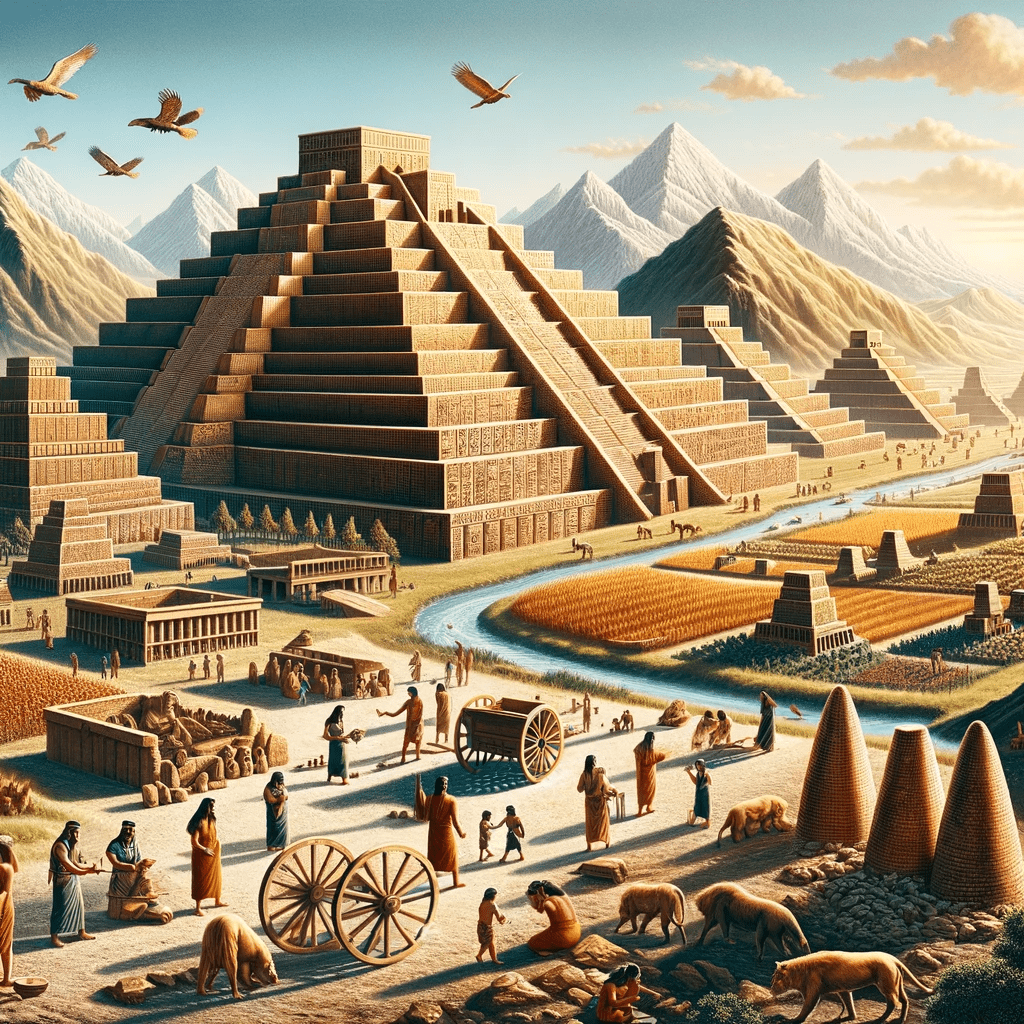Sumerians

The Sumerians were an ancient civilization that thrived in the region of Sumer, located in present-day southern Iraq, more than 4500 years ago. As one of the world’s earliest civilizations, the Sumerians were responsible for numerous innovations and developments that laid the foundation for subsequent human societies. Their contributions to art, literature, architecture, law, and governance have left a mark on world history.
The Sumerian civilization emerged around 4500 BCE and lasted until approximately 1900 BCE. The region they inhabited, known as Mesopotamia, was situated between the Tigris and Euphrates rivers, which provided fertile land for agriculture. This allowed the Sumerians to develop a stable food supply, which in turn enabled the growth of cities and the establishment of complex social structures.
Sumerian society was organized into city-states, each governed by a king who was responsible for maintaining order, defending the city, and overseeing religious practices. Religion played a significant role in the daily lives of the Sumerians, who believed in a pantheon of gods and built impressive temples called ziggurats as places of worship. The priests held considerable power, as they were responsible for communicating with the gods and interpreting their will.
The Sumerians made numerous contributions to the fields of science and technology. They are credited with the invention of the wheel, which revolutionized transportation and trade. Additionally, they developed the first known system of writing, known as cuneiform, which allowed for the recording of laws, literature, and historical events. In terms of mathematics, the Sumerians used a base-60 numeral system, which is the basis for the way we measure time today.
Facts about the Sumerians:
- The Sumerians were among the first to use a written legal code. The Code of Ur-Nammu, dating from around 2100 BCE, is one of the earliest known legal documents (Source: Roth, Martha T. (1997). Law Collections from Mesopotamia and Asia Minor. Atlanta: Scholars Press).
- The Sumerians developed the concept of the city as a distinct and separate political entity, which is the foundation of modern urban planning (Source: Childe, V. Gordon (1950). The Urban Revolution. The Town Planning Review, 21(1), 3-17).
- The Epic of Gilgamesh, one of the world’s oldest known pieces of literature, originated in ancient Sumer (Source: George, Andrew R. (2003). The Babylonian Gilgamesh Epic: Introduction, Critical Edition and Cuneiform Texts. Oxford: Oxford University Press).
Dr. Samuel Noah Kramer and Dr. Harriet Crawford, have extensively studied the Sumerians and their impact on human civilization. They emphasize the significance of Sumerian innovations, like the invention of writing, which enabled the documentation of history, and the development of urban life, which laid the groundwork for modern cities.
Books on the subject of the Sumerians and their contributions to human civilization include “History Begins at Sumer” by Samuel Noah Kramer and “Sumer and the Sumerians” by Harriet Crawford. These books explore the various aspects of Sumerian life, from their religious practices and political structures to their artistic and literary accomplishments.
Archaeologists have made significant discoveries about the Sumerians through the archaeological record, thanks to extensive excavations in modern-day Iraq. Notable sites such as Ur, Uruk, Nippur, and Eridu have been the focus of these investigations, revealing a trove of artifacts, architectural remains, and written records that offer valuable insights into various aspects of Sumerian society.
Cuneiform tablets: One of the most significant findings has been the thousands of cuneiform tablets recovered from these sites. The Sumerians used cuneiform as their writing system, and these tablets provide a wealth of information about their daily lives, economy, religious practices, and literature. Examples include the Epic of Gilgamesh, the earliest known literary work, and administrative records detailing trade and agricultural activities.
Cylinder seals: Another important discovery is the numerous cylinder seals found throughout Sumerian sites. These small, cylindrical objects were engraved with intricate designs and used to make impressions on clay tablets or other materials, serving as a form of signature or identification. The intricate artistry on these seals demonstrates the Sumerians’ advanced skills in craftsmanship and their importance in economic and administrative activities.
Statues: Sumerian statues, often made of stone or clay, have been found in temples and other religious sites. They range from small votive statues depicting worshipers and deities to large-scale sculptures of rulers and high-ranking officials. These statues provide insights into Sumerian religious practices and the social hierarchy within their society.
Pottery: Excavations have revealed a wide variety of pottery, which serves as evidence of the Sumerians’ expertise in ceramics. The pottery includes everyday items, such as bowls and jars, as well as more elaborate and decorative pieces. Pottery artifacts help archaeologists understand Sumerian domestic life, trade networks, and technological advancements.
Ziggurats: The Sumerians are known for their monumental stepped temples, called ziggurats. Constructed with mud-brick, these structures were often dedicated to the patron deity of a city and served as the center of religious life. The remains of several ziggurats, such as the Great Ziggurat of Ur and the White Temple in Uruk, have been discovered, providing important information about the architectural prowess of the Sumerians and their religious beliefs.
The Sumerians were a highly influential civilization that made numerous contributions to human society, many of which continue to impact our lives today. Their innovations in technology, governance, and art have shaped the course of history and laid the groundwork for the modern world.

